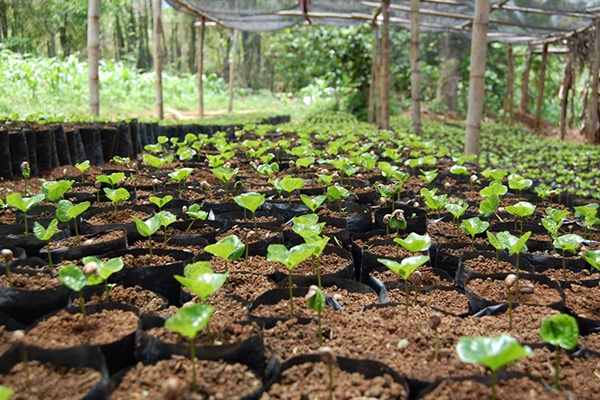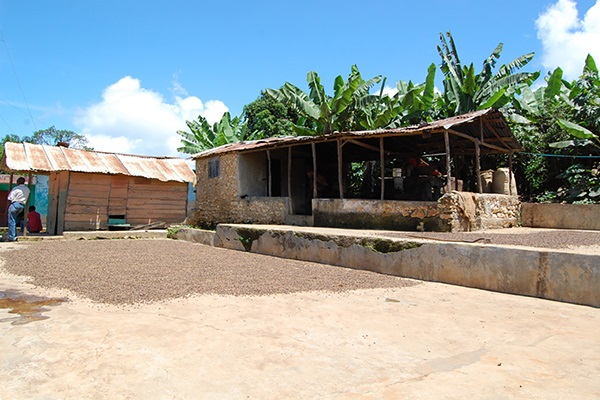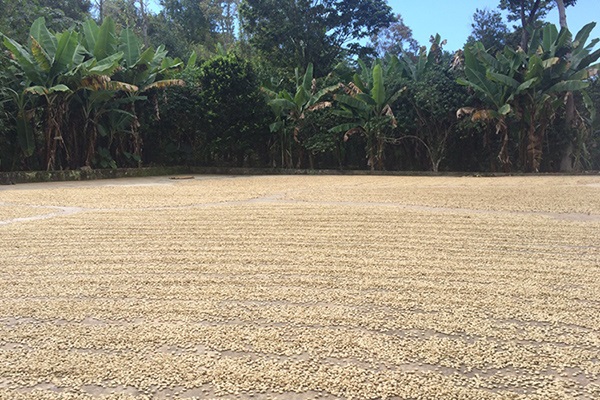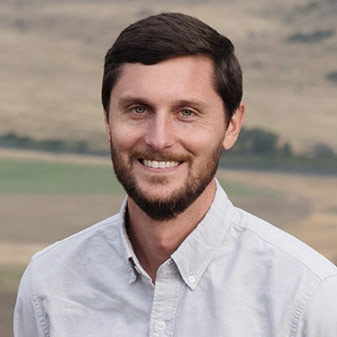My grandparents probably couldn’t have fathomed paying $5 for a cup of coffee. For that price you can buy an entire vacuum-sealed tin can of the Maxwell House or Folgers beans that lined the pantries of their generation. But while many Americans still see coffee as little more than a source of caffeine to start the day, the way many of us consume the beverage has transformed in recent years. High-end cafes across the country now offer single-serve, made-to-order coffees prepared for customers with exacting detail—and sometimes for prices that rival those of a glass of house wine.
Today, the retail coffee market in the United States is estimated to be worth nearly $50 billion. And the high-quality, so-called “specialty” segment of it—the filet mignon to the sirloin that is tin-can coffee—has been booming, growing at an estimated 10 percent annually for about a decade. Europe, the largest coffee market in the world, has also awakened to good coffee, and demand there is ratcheting up, as it is in coffee-crazed Japan. The boom even extends to traditionally tea-drinking China, where Starbucks plans to expand its operations by 70 percent over the next three years, opening 1,400 new cafes—an average of more than one new store a day.
This growth is presenting new opportunities for the people who are increasingly featured in the marketing of these coffees: the tropical farmers who produce them. By selling to a quality-minded buyer, a coffee grower might be paid twice what he or she would make if selling into a less-discriminating commodity market. Amidst this boom, however, there’s an overarching challenge staring down coffee farmers all over the tropics: climate change.
High-End Coffee
The beans that go into making your morning coffee actually come from the fruit of a small tropical tree. Ripe red coffee cherries contain the seeds, or beans, that are harvested, processed, shipped, roasted, and eventually brewed into the hot liquid that kickstarts so many Americans’ days.
But coffee is a finicky plant—especially arabica coffee, the species known for its excellent cup quality that comprises the majority of specialty coffee. Coffee trees grow only in specific microclimates limited to wet, mountainous areas of the globe’s tropical belt. As temperatures are predicted to rise in coming decades, the area viable for coffee cultivation is expected to retreat toward cooler climes found higher up mountaintops. The latest research from both the International Center for Tropical Agriculture and World Coffee Research suggests that by 2050, the global area suitable for coffee production could shrink by half. The upshot is that farmers who currently rely on coffee for their livelihoods could be devastated—if they don’t find ways to adapt to their changing environments.
Because most coffee is harvested selectively by hand, and coffee cherries ripen sporadically over the course of a months-long season, there are relatively few economies of scale in harvesting it. Partly for this reason, coffee is one of the most profitable crops for small-scale farmers. Collectively, an estimated 25 million smallholder farmers produce about 80 percent of the world’s coffee. And because they’ll never compete on volume with the large farms that have the highest yields in the world, the more lucrative specialty market is a natural fit for them. Even a meager harvest can be a worthwhile proposition if sold at the right price.
The high-end coffee boom has brought about more product differentiation. Trendy roasters today often market a bag of coffee similarly to how you’d expect to be sold a bottle of wine—the label might feature information about the variety of the coffee plant, the altitude it grew at, and how the beans were processed, all of which can influence its taste. And as with wine, roasters are also likely to emphasize the coffee’s origin down to the growing country, region, or even farm.
With these shifts, many coffee companies have adopted some version of “direct trade”—a concept without an official definition but that essentially boils down to two things: transparency and traceability. The idea is that instead of having a third-party stamp your bag with a label like “fair trade” to signal that it was produced responsibly, a company tries to directly show and tell its clientele how its product was produced, doing its own due diligence throughout the supply chain. Many direct-trade roasters visit coffee growers regularly to emphasize the importance of quality and confirm that the relatively high prices they pay to exporters truly trickle down to farmers.
As one result, these growers have become the focal points of specialty coffee marketing. Consequently, awareness has shifted toward the challenges at this end of the supply chain—including climate change, and how it might shift the outlook of the global industry over coming generations. And if there’s one coffee-growing country that may be a canary in the coal mine when it comes to the global industry, it’s Haiti.
Haiti as a Harbinger
“It’s better to grow something you can sell on the international market,” says Dieujuste Joseph, a farmer in the mountains of southeastern Haiti. As we walk around his farm, Joseph explains that he can make more money selling his high-quality arabica coffee into an export market than by selling to local buyers. But diversifying his crop production is also important to him, he adds. Avocado, mango, banana, and grapefruit trees also grow among his coffee plantings.
Coffee, in theory, is a great option for a rural farmer in tropical mountains. But many of Joseph’s fellow Haitian farmers have either neglected their coffee or abandoned it entirely because they’re “in misery,” he says, struggling to feed their families. Their need for subsistence crops to feed a family today wins out over investing in a longer-term cash crop.
Haiti’s coffee sector has been on a steady decline for a half-century. Since the 1980s, production has fallen by half, and official exports have plummeted by 95 percent. There are many underlying causes—some of them not related to coffee at all.
Since Haiti gained its independence through a successful slave revolution in 1804, it has been plagued by political instability and weak institutions. In just the past 30 years, there have been 18 separate terms served by heads of state—rather than the six you would expect since the term limit for a Haitian president is five years. Over those years, political instability has wracked the nation—from the vacuum left after the 1986 ouster of the Duvalier dictatorship, to the international sanctions and embargo of the early 1990s aimed at removing a military junta, to the insecurity and violence of the mid 2000s. Regardless of who’s dwelled in the presidential palace, the state has too often been more focused on private, short-term gain than on building a proper education system, functioning roads, secure property rights, a fair judiciary, or any other system that would help ordinary citizens flourish.
For many of the same reasons that Haiti is vulnerable to natural disasters, a changing climate stands to exacerbate many of its coffee sector’s existing challenges—if not decimate it entirely.
The uncertainty that still undergirds much of daily life threatens long-term planning and investment of all sorts. When it comes to coffee, it can take up to four years for a new seedling to give its first full harvest. Food crops like beans or vegetables, on the other hand, have multiple growing cycles each year, and they can help feed a farmer’s family in addition to earning income on local markets.
On top of that, land tenure in Haiti is notoriously a mess. Less than 5 percent of land is officially recorded in the national cadastre. The informality and uncertainty of the system can limit economic activity, investment, and dynamism—not an ideal situation for coffee farmers who require long-term investment in their trees, let alone those who may have to move to higher altitudes if they want to stick with the crop in the face of a changing climate.
Beyond the economic challenges, coffee plants are vulnerable to more than 1,000 diseases and pests, including two of the most damaging—a fungus called coffee leaf rust and a beetle that bores into cherries and ruins the beans. Other hazards, such as drought, are nothing new to farmers, but that makes them no less difficult to cope with.
When it comes to weathering natural hazards like hurricanes, drought, and earthquakes, Haiti is famously one of the least-resilient nations in the world. While some of the vulnerability can be chalked up to unfortunate geography—the country lies along a hurricane alley and sits on a tectonic boundary—most experts agree that the crux of it is poverty, along with the consequent deforestation and soil erosion after centuries of pressure on the land. For many of the same reasons that Haiti is vulnerable to these disasters, a changing climate stands to exacerbate many of the coffee sector’s existing challenges—if not decimate it entirely.
Coping With Change
Making projections decades into the future may be more akin to using a sundial than an atomic clock, but most experts agree that climate change is expected to weaken coffee-growing prospects in much of Haiti. A 2014 report by the International Center for Tropical Agriculture (CIAT) notes that by 2050 “coffee will become considerably less suitable for production at lower elevations.” Less rainfall and higher temperatures could cause both coffee yields and quality to fall, especially at altitudes below 1,200 meters.
The effects of a changing climate will be mixed, even across a country that’s only about the size of Massachusetts. But one ubiquitous threat is that the high-altitude forests that coffee depends on could be converted to cropland as growing ranges creep upward—an unfortunate consequence for a country that’s already severely deforested after decades of farmland replacing forests and firewood and charcoal being the primary fuel sources.
The CIAT models predict that while arabica coffee production will become less viable in low-altitude areas, it will become more suitable in higher areas, including the southeastern mountains where Joseph lives and farms.
Like Joseph with his assortment of fruit trees, most Haitian farmers practice diversified agriculture. But farmers at low elevations will likely have to diversify into other crops even more in the face of climate change, if not completely replace their coffee production. Cacao, the raw ingredient for chocolate, may be one viable alternative—CIAT notes that it’s “highly suitable for production in Haiti and is likely to remain so, despite long-term changes in the climate.” Like coffee, cacao also grows in tropical mountains, just at lower altitudes. The models also suggest that mango—already Haiti’s current leading agricultural export—may in fact become more viable due to higher temperatures. Sorghum, yam, and peanuts could also become promising candidates for diversification or substitution.
Impending climate challenges will require various solutions depending on context and local factors, but the CIAT report makes one recommendation clear: farmers should adapt.
The Ways Forward
Researchers from CIAT and elsewhere have modeled climate predictions across much of the coffee-growing world, particularly the effects on arabica production. As in Haiti, the effects are not expected to be uniform.
A report commissioned by the Consultative Group for International Agricultural Research suggests that Brazil may find its area suitable for arabica coffee reduced by 25 percent by 2050. East African producers, on the other hand, could see increased rainfall and shorter dry seasons. The report predicts there will be “little change in suitability of the areas in Ethiopia, Kenya, Rwanda, and Burundi” that currently grow arabica coffee. Indonesia, the fourth-largest coffee producer in the world, and much of the rest of the Asia-Pacific would likely see relatively minor changes in rainfall but lose arabica production area overall.
What’s the mechanism for climate threatening coffee cultivation? The variations in climate can be particularly damaging. Too much moisture can promote leaf rust, whose orangish spores attack leaves and prevent plants from photosynthesizing, which can destroy an entire farm in a single season. In 2012, a rust epidemic caused an estimated $1 billion in crop losses across Central America. Too little rain, on the other hand, will stress plants’ ability to produce full crops. Drier conditions can also be favorable to certain types of the borer beetles that attack coffee.
Potential adaptations to manage these effects include irrigation systems, improved coffee varieties resistant to drought or disease, and better shade management to cope with higher temperatures. Haitian growers may be well-suited to improve shade conditions. Virtually all their coffee is already grown under some shade, largely due to the diversified agriculture practiced throughout the country. A major question for Haiti, however, will be how small-scale farmers accomplish these sorts of adaptations in a country with a per capita GDP of just $830 and feeble political and legal institutions that are antithetical to long-term investment.
It may simply turn out that it will no longer make sense for many Haitian coffee farmers to remain coffee farmers. Mangoes, cacao, and other crops, if not other lines of work entirely, may become better options given the trade-offs. But if adaptation will be particularly difficult for Haiti, other countries should be better suited to adapt to a new coffee world.
Cenicafé, Colombia’s National Coffee Research Center, for instance, has for decades invested in developing coffee varieties that are resistant to leaf rust. The Center has helped Colombian farmers replace more than 3 billion coffee trees with improved varieties, translating into “higher productivity and regional adaptation.” Thanks to a Cenicafé web platform, Colombian growers can also check regional climate conditions online and compare them to historical trends.
Similarly, Brazil has funded research into coffee adaptation strategies focusing on heat-resistant varieties suitable for the relatively low altitudes and high temperatures of the country’s coffee areas. Certain growers in Guatemala have also begun to adapt their farms by using improved shade management, homemade sprays that help prevent leaf rust, and mixes of both traditional and disease-resistant or high-yielding varieties. Some have even started to diversify their coffee production with cardamom and honey.
Most coffee-agronomy research is conducted by public institutions or national governments. As the coffee sector’s vulnerability to climate has become more apparent in recent years, however, the private sector has started to focus on the great needs at the production end of the chain—and on what will have to happen to make sure the sector will be able to adapt and continue to thrive.
World Coffee Research (WCR), a non-profit organization housed at Texas A&M University and largely funded by donations from coffee importers, roasters, and other actors in the sector, is pushing the limits of coffee research—“ensuring the future of coffee,” as its website reads. In summer of 2016, WCR released a comprehensive “variety catalog” packed with information concerning yields, disease resistance, botanical data, and cup quality for coffee varieties grown across Central America and the Caribbean. The organization estimates that just by using the resource to help make decisions about which varieties to plant, farmers can increase both coffee quality and quantity by up to 15 percent.
WCR also researches coffee genetics and breeding, factors that affect quality, and adaptation strategies to cope with climate change effects. It notes that the “best hope for sustaining the supply of high quality coffee in the 21st century is to focus on making the coffee plant more resilient. The creation of new, highly adaptable varieties, supported by a vibrant new seed sector, will result in major global productivity and quality gains in the next 10-20 years.”
Bullish on the Bean
Decades from now, some of today’s coffee-farming families will surely find that cacao, mangoes, or another line of work entirely are better options than coffee production. But one advantage for whoever becomes the next generation of coffee farmers is that the craze for pour-overs, espressos, and other high-priced coffee drinks shows no sign of slowing any time soon. Overall, it’s a good bet that this demand will continue to drive innovation and adaptation, ensuring that coffee drinkers around the globe can still get their fix. But a long way from the trendy cafes, there will be significant changes in land use and production techniques across the tropics.
The demand for coffee will continue to drive innovation and adaptation. But a long way from the trendy cafes, there will be significant changes in land use and production techniques.
Small-scale farmers might have a leg up with certain adaptation challenges. If Brazil loses a significant portion of its coffee-growing area, the world market would lose a huge chunk of its volume. Producers like Vietnam—which hardly grew coffee 30 years ago but now ranks second in the world by growing the species of the plant that’s used in cheap, instant coffee—could fill in that volume at the low end of the market. That might leave smallholders high up in the mountains, whether in East Africa, the Andes, or Papua New Guinea, better suited to supply specialty markets.
“The solution for coffee and climate change will not be one big, blunt hammer,” writes Hanna Neuschwander of WCR, “it will be thousands of tiny hammers, designed to hit very specific nails.” Adaptations and solutions to changing climates will likely look very different from Brazil to Ethiopia to Haiti. Despite a spate of doomsday media headlines about “coffee’s coming extinction” due to climate change, global demand will continue to drive innovations from the coffee farmers, agronomists, and researchers who make the sector their lives and livelihoods—and ensure pour overs and espressos remain. But from farmers’ perspectives, the world of coffee production may look very different in the next 50 years—and it’s possible many will not call themselves coffee growers anymore.






